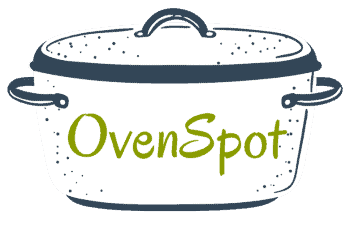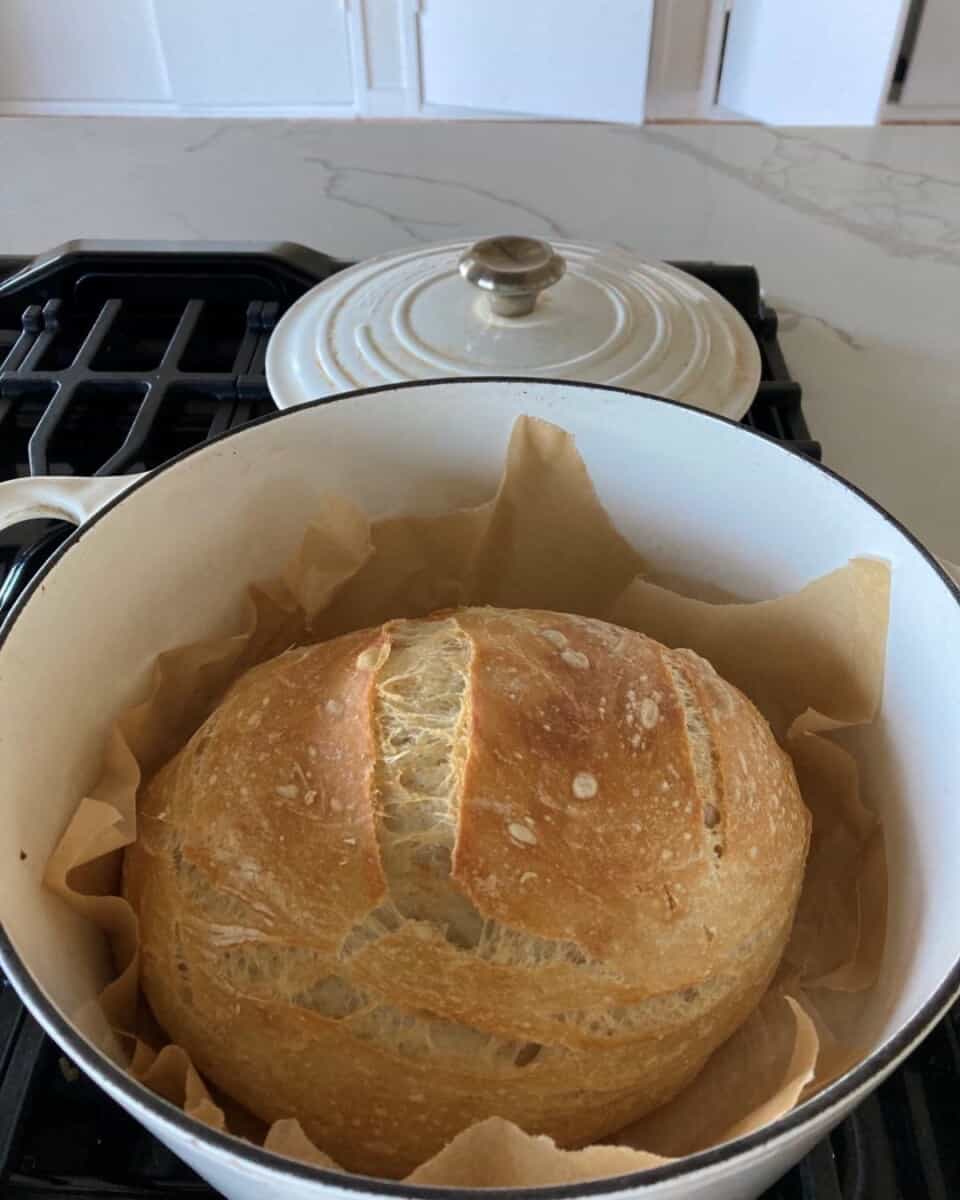How to Use a Dutch Oven on a Stove Top
Dutch ovens are amazing in their versatility and wide range of uses. Dutch ovens are not limited to certain cooktops. Now, no matter if you have a gas flame, electric coils, or even a cutting-edge induction cooktop, you can reap the benefits of this versatile cookware.
Everyone knows their amazing in-oven properties to create the perfect Coq au vin or casserole, but what about how you should use your Dutch oven on a stovetop?
To use a Dutch oven on a stovetop, heat the oven up over low to medium heat with oil or water in the base. Add ingredients, and adjust the heat according to your recipe. Dutch ovens retain heat well and don’t need high heat settings. Gradual heating helps keep a close eye on cooking temperatures.
You must also consider which materials the oven is composed of and how to use them on specific surfaces to protect your food, stovetop, and pot. You can use your Dutch oven on electric, gas, induction, glass-topped, and Vitroceramic stovetops.
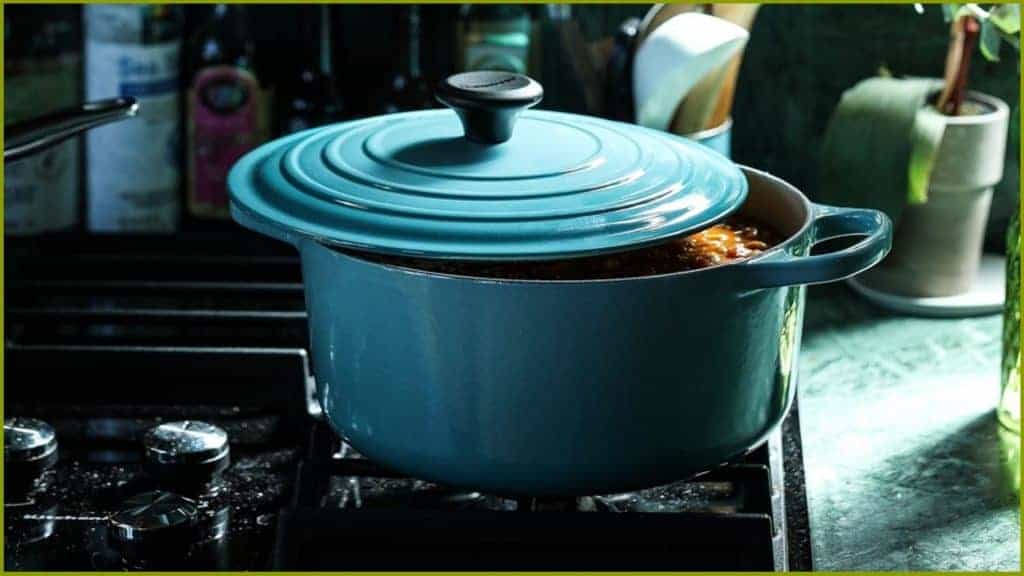
If you are keen to start trying out your Dutch oven on top of your stove instead of in your oven, I have formulated some handy tips to get you started.
Disclaimer: I earn from qualifying purchases on my website as an Amazon Associate. If you purchase through links from this website, I may get a small share of the sale from Amazon and other similar affiliate programs.
What Is a Dutch Oven?
Dutch ovens have been around for a long time. Originally made from brass in the Netherlands and cast in sand molds, an enterprising American, Abraham Darby, cribbed the design in 1704.
He found a far more cost-effective way to make these Dutch ovens by producing them in cast iron. In the 18th and 19th centuries, cast iron pots were so valuable that they were mentioned in the owner’s will.
There are many kinds of Dutch ovens today, and most are still cast iron-based.
There are ceramic versions, cast aluminum Dutch ovens, and the iconic enameled iron of Le Creuset. Dutch ovens are versatile and can be used on open fires, charcoal ovens, and stovetops.
The poor heat conduction of a Dutch oven means that it retains its heat well, so it is the perfect choice for slow cooking of stews, casseroles, and rich meat dishes.
Dutch ovens can function well on a stovetop, but you should take precautions to ensure that your pot is not damaged or your food may burn.
When considering if you may use your Dutch oven on a stovetop, you should consult your manufacturer’s guidelines.
You should ensure that the pot is cast iron or aluminum and not coated with ceramic or stoneware. This will crack if heated on a stovetop and should always be used inside an oven.
Due to the ceramic material’s nature, if it is not evenly heated, some parts will expand while the other cooler parts will not. This imbalance will cause your ceramic pot to break.
How to Use a Dutch Oven on a Stove Top
Follow these simple steps to cook in your Dutch oven on the stove to prepare soups, casseroles, or stews.
- Have all ingredients peeled, chopped, and diced? Herbs and spices, salt, pepper, and liquids were measured.
- Add oil and heat the Dutch oven up over low to medium heat.
- Sear and brown any meat, remove it, and set it aside.
- Add more oil and saute’ onions, garlic, ginger – whatever your recipe requires. (usually for a couple of minutes)
- Return meat to the pot, add vegetables, other ingredients, and liquid, and return meat to the pot. Stir until combined.
- Brown, the pot to a simmer, replace the lid and reduce heat enough so the Dutch oven is lightly simmering.
- Cook for the required time.
Using Dutch Ovens on Induction Cooking Plates
Induction stoves work by transferring heat created by magnetic energy, making them perfect for a typical Dutch oven.
The copper wire beneath the cooktop heats the metal pot via an alternating current that produces a magnetic field. Because the Dutch oven is ferromagnetic, these magnetic waves pass through into the pot itself.
Using your Dutch oven on an induction stovetop is a safe and energy-efficient way to cook your food. Because heat is limited to your vessel’s bottom, the rest of the area remains cool enough to touch.
What to Avoid When Using Your Dutch Oven on an Induction Stove
Dutch ovens function best when they are heated up slowly to mid-range temperatures. Do not preheat your Dutch oven to high temperatures, or you will risk the food at the bottom burning before the rest of the meal is cooked.
Make sure that your Dutch oven is room temperature or warmer when you introduce it to heat. Temperature changes may affect your enamel through accelerated expansion or contraction of the metal.
Ensure that your cast iron pot does not scratch your induction stove’s glass surface. It is a good idea to place parchment, paper, or Silpat mats between the glass and the base of your pot.
Round-bottomed Dutch ovens will not work on an induction plate.
What to know if cast iron works on an induction cooktop?
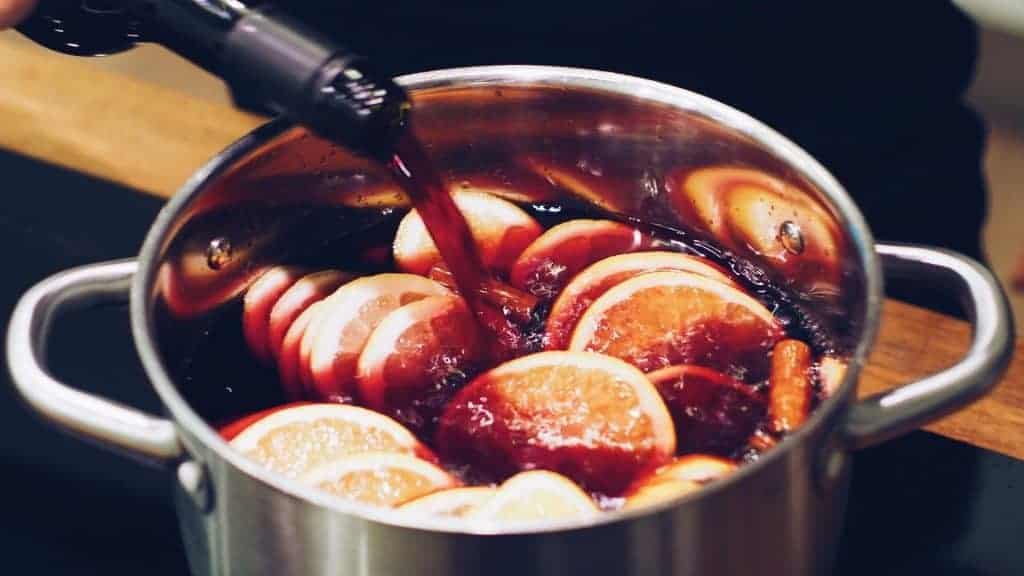
Using Dutch Ovens on Glass Top Cooking Plates
Although your seasoned cast-iron pot will work perfectly on a glass-top stove, your glass might not fare as well.
Enameled cast-iron Dutch ovens are a much better alternative as their smooth surface will not cause scratches on your glass as easily as cast-iron ovens.
However, the weight of even enameled Dutch ovens may be a concern if you should perhaps drop them in the cooking process.
Cast iron pots are not always smooth and might have burrs and imperfections in the iron finish that can leave scratches on your beautiful glass top.
Related read Induction Compatible Cookware Guide
What to Avoid When Using Your Dutch Oven on Glass Stovetops
Lift your pot gently rather than slide your Dutch oven. If you need to slide your Dutch oven onto your plate, lift it gently and place it in the desired position instead.
Make sure not to knock or drop your Dutch oven when lifting it onto your glass top. The cast-iron pots are much heavier than your standard cooker range of products and may chip or, worse, break your glass top. Use both hands to lift your pot and set it gently into place.
Wash your cast iron before using it on your glass-top stove. Cast iron Dutch ovens absorb more oil and collect foodstuff over time than your standard cookware due to its porous nature.
These deposits may burn on your glass stovetop and leave stains on your glass. Don’t worry. You can wash your cast iron pot with soap and water as long as you season it after each wash.
Ensure that there are no chips or imperfections in your pot’s enamel or the cast iron before using it on your glass top.
Cast iron can be sanded to remove burs, but the surface will still not be ideal for glass tops.
Purchase a heat diffuser to set between your stovetop and your cast iron pan. Heat diffusers are handy for protecting sensitive surfaces. If you aren’t familiar with the heat diffuser, this COOZYER Heat Diffuser is an example.
Using Dutch Ovens on Electric Stoves
Dutch ovens work well on electric stoves, and they are easier to work with than glass or induction hobs because the electric ring burners don’t show scratches and are generally hardier. Cast-iron pots may be shifted about on electric plates without fear of scratches, which is beneficial.
Because electric burners take longer, you will need extra time to bring your pot up to temperature.
Learn if you can use cast iron on a glass-top stove.
What to Avoid When Using a Dutch Oven on an Electric Stove
Don’t leave the electric burner on high once your pot is heated. You don’t need to keep your electric plate high because cast iron retains heat well.
Instead, put your electric plate on medium for a longer period to get the process started.
Once your food is heated, turn the heat down to low to prevent hot spots or scorching. It will continue to heat your food residually because cast iron retains heat well.
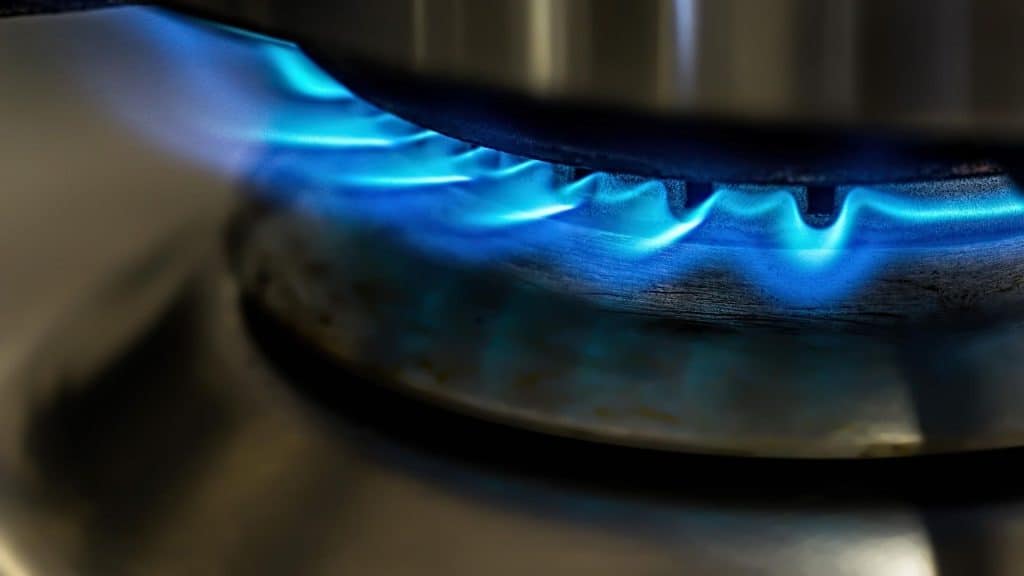
Using Dutch Ovens on Gas Stoves
Both enamel-coated and seasoned cast-iron Dutch Ovens work well on a gas stovetop. Scratching is prevented by the bottom of your Dutch oven being supported by the hobs.
Make sure to heat your Dutch oven on a slow heat because gas heats more quickly than other stove points.
Related reading: What is the Best Cookware for Gas Stoves?
What to Avoid When Using a Dutch Oven on a Gas Stovetop
Dutch ovens need a long and moderate preheating before your food begins to cook. If you rush this step, you will have hotspots, and the heating will be uneven.
Enamel Dutch ovens can scorch if placed too long on burners that are set too high.
Slow and easy is the best policy with Dutch ovens because once the heat conducts through the pan, it stays hot even at a low temperature.
Other Considerations When Using Dutch Ovens on Your Stovetop
You may use Dutch ovens on all heat sources, electric, gas, radiant plates, Vitroceramic glass induction gas, and flame.
However, it would help if you keep these rules in mind:
- Enamel surfaces are not suitable for dry cooking, and your liquid choice of oil, butter, or fat should cover the entire bottom of the pot before heating.
- Medium heat is the best setting, even for searing and frying.
- Allow the pot to heat gradually for the best cooking results.
- High heat should only be used to boil water, vegetables, and pasta or reduce stocks and sauces.
- Never preheat a Dutch oven on high heat before lowering your cooking heat because this can cause sticking and uneven cooking.
- Never submit your Dutch oven to extreme temperatures, such as cold water, after cooking or moving from a cold source to a hot area.
If you are keen to try out your Dutch oven on your stovetop, here are some great recipes to start you off.
Dutch Oven Materials
There are many benefits to using this versatile cookware. The key lies in the material:
- Cast Iron: The classic Dutch oven material is naturally induction-compatible and works beautifully on all cooktops. Its exceptional heat retention makes it perfect for slow braises and even searing. Just remember to preheat gently and use medium heat to avoid scorching.
- Enameled Cast Iron: Offering the same heat distribution and versatility of cast iron, enameled models add a touch of elegance and ease of cleaning. Their smooth surface prevents sticking and makes them ideal for acidic dishes. Just ensure the enamel is induction-compatible for seamless use.
- Other Induction-Compatible Materials: From stainless steel to ceramic, several Dutch ovens are specifically designed for induction cooktops. Look for labels indicating compatibility and enjoy the benefits of each material’s unique properties.
So, whether you’re a seasoned cook or just starting out, explore the wide range of Dutch ovens available and find the perfect one for your kitchen and cooktop. With the right choice, you’ll unlock a world of culinary possibilities!
Additional Tips:
- Consider the size of your Dutch oven and ensure it fits comfortably on your cooktop burner.
- Always use low to medium heat on induction cooktops, as they heat quickly.
- When choosing an enameled Dutch oven, opt for a light-colored interior for easier monitoring of food browning.
FAQs
Can I bake on a stovetop?
Yes, you can bake on a stovetop. The process is similar to that carried out in a Dutch oven when baking over a campfire or well-placed hot coals or briquettes.
- It requires a large Dutch oven or cooking pot with a lid.
- A wire rack that can sit inside the cooking pot.
- A separate cake tin or similar in which the baked goods will be cooked.
- Heat up the cooking pot at a high temperature
*Insert the cake tin or other tray. - Cook for 5 minutes at a high temperature – lower heat and cook for a further 20 minutes or until goods are baked as required.
- Take great care in removing the cake pan from the hot cooking pot.
What can I use instead of an oven?
There are many options for substituting an oven. The choice will depend upon the type of meal you want to prepare.
These appliances can be used instead of in an oven.
- Roaster ovens
- Toaster
- Stovetop
- Instant Pots
- Multi-purpose cookers
- Slow cookers
- Air fryers
- Electric fry pans
- Bread ovens
Learn how to cook rice in a cast iron Dutch oven on a stovetop
To Finish – How to Use a Dutch Oven on a Stove Top
Since the 1700s, these iconic culinary tools have made their mark and continue to do so.
Dutch ovens can be used in various ways, and no other cooking pot can function as well on an open fire as an induction stove.
Understanding your cast iron oven’s unique requirements will ensure that your dishes will be sumptuous and your stovetop and Dutch oven will last.
You may even want to start thinking of who you will bequeath your Dutch oven to in the distant future.
Inspiration for Using a Dutch Oven on a Stovetop
One-Pot Cooking Rocks!
Sources
Induction Guide: How Will a Dutch Oven Work on an Induction Stovetop?
Le Creuset: Squeaky Clean How to Care for Your Cast Iron Pot

Michelle
Hi, I’m Michelle, the founder, owner, author, and editor of OvenSpot. My passion for one-pot cooking commenced when I was working to prepare cafeteria lunches for school students. I am now on a mission to assist you in choosing the cooking pot or appliance you will use daily. As well as in-depth information to assist you in using and caring for your cookware and appliances.
Questions? Reach out to Michelle at [email protected]
